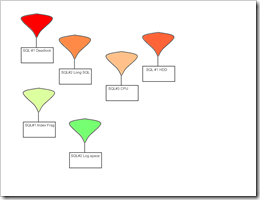“Hi Jonathan, my name is Adam, I work for Red Gate, on the SQL Response team. I am wondering if it would be possible to arrange a user experience session with you please? It should only take about 10 or 15 minutes, if you could help us out we’d really appreciate it.”
That’s how it all started, over 18 months ago. I had recently purchased a SQL Toolbelt license that also included SQL Response. I installed SQL Response and was impressed but had a question or two and it was in reply to those queries that Adam had called me. I happily agreed as that amount of time wasn’t difficult to find and I figured at least I would get the answers to my questions and may even influence how the product was going to be developed.
I arranged a laptop and booked a meeting room for the agreed time and off we went on the remote session, a few questions here, some opinion there, an explanation of why I wanted this, a puzzle over why I did that with the mouse at that point . . . 2 hours later we said goodbye and I was noting a slightly longer lunch break than I had anticipated on my timesheet.
From that point on poor old Adam was my first port of call for ideas, questions and complaints about SQL Response. When the project for the next version was started I was still in touch with the team and was included from an early stage. As soon as there was a downloadable package I had an email and excitedly installed it on my test server. It was a bit basic with much of the navigation missing – leading to many “this feature is not yet implemented” messages. For several editions after this one there were moments that brought the whole application to a standstill, sometimes this was resolved by closing the browser, other times by stop-starting the services and occasionally needing a reinstallation to recover from the problem. Steadily, however, the versions became more stable, had less effect on my test servers and, most excitingly of all, started giving out some meaningful and useful information.
All the time I was feeding back information and ideas, either from the built-in feedback link in the UI or via email or their specific feedback forum.
With all of this exchange of ideas and experiences I began to feel part of the development team and am really proud of the product that is now in Beta testing. You would have to get a fully paid-up member of development team in a tight corner in order to find out exactly how much I helped or hindered but I like to think that I have helped in someway, even if it was a demonstration of what not to do in some cases!
Recently Red Gate announced that the second versions of SQL Response was was being renamed as SQL Monitor. I have the Beta version installed now on the server that the final product will be installed on and it is showing itself capable of work in a production environment with no issues yet. The server isn’t live yet as SQL Monitor is still in Beta but once the application is fully released then the server will go live at the centre of my main SQL Server monitoring configuration. It has already helped me track down a data import process that was putting unnecessary load on a database and settings have been changed to ease the pressure.
One of the best usability features about SQL Monitor is that the interface is web based. This means that no matter which location I am at on the Company network I can log in and see the situation with my servers. I don’t need a specific PC or laptop with the software installed or be on the same LAN as the servers. I can also share this login with other members of the IT department so they can do some basic checks for me while I am away.
For the best technical feature I am torn between;
1 – the ability to travel back in time and have the UI display information in real time as though it was a minute, 10 minutes or even hours ago. This means when I get a call about a server going slowly, I can see what was going on BEFORE the incident. It’s like Sky+ for your SQL servers, pause and rewind live performance metrics when you want a better look at something.
2 – the Analysis feature, letting me compare this hour with the last hour, or today with yesterday, and so on. This means I can see how the server is coping with any changes I have rolled out – maybe the server is running a new system. Existing users will often say they are seeing a slow down when they know their resources are being shared, with this I can prove it one way or another and then we can take action accordingly.
All in all I am not sure that this is a new version of SQL Response(the name change may well reflect Red Gate’s opinion on this too), it is so fundamentally different that I feel it is a wholly new product. I for one am very pleased that it is included in the SQL Toolbelt license so I wont need to purchase anything extra in order to benefit from it. I would strongly recommend that you get hold of a Beta copy and start using it so that you can start to see how it will help you monitor your SQL Servers, if you haven’t already. The full release is just around the corner.




Load comments